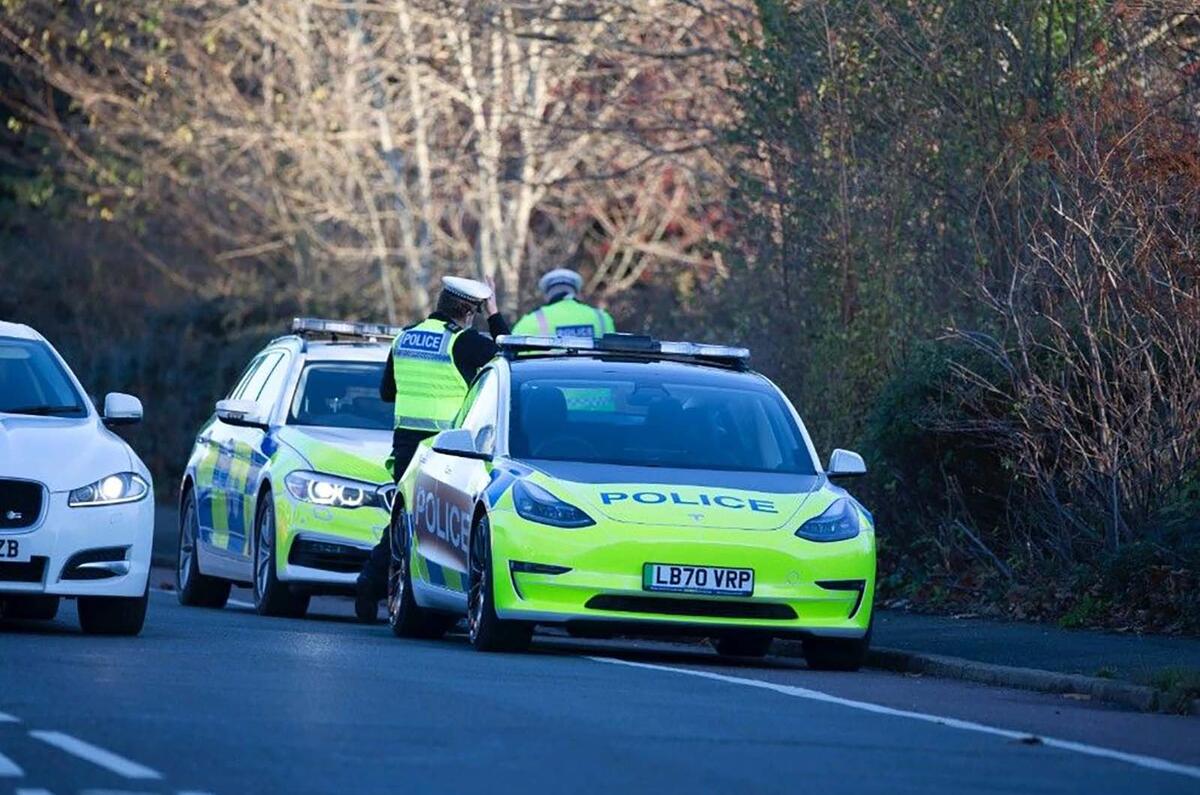An electric police car? Stop right now with the jokes about running out of juice just as it’s about to catch the criminals. According to research by Tesla, electric cars could be the future of (silent) police pursuits.
The electric car maker has been trialling a number of Model 3s across forces in the UK over the past nine months. It has now revealed its specially modified Tesla Model 3 police cars are capable of over 200 miles of blue light advance driving.
Its research suggests that the Model 3 is capable of running for more than four hours on active deployment under advanced driving conditions - and that the average blue light run in the UK is around seven to 15 minutes in total.
The test also concluded that onboard surveillance systems have little impact on the car’s battery, with Tesla estimating that the ANPR system would only take a few miles off the battery range if used for a typical three-hour shift.
Highlighting that battery conservation techniques could extend range significantly, Tesla’s emergency services lead, Max Toozs-Hobson, highlighted the option of using the Model 3’s power-limited ‘Chill Mode’ as well as its acceleration limiter to reduce battery consumption in non-emergency situations.
The adaptations also take advantage of Tesla’s over-the-air-update facilities, with police forces able to use new software to send directions to emergencies direct to the Model 3’s infotainment screen.
Tesla also says the Model 3 police car proved to be cost efficient. After 15,000 miles the car required new brakes and tyres but limited servicing compared to traditional, combustion-engined police cars. It’s ‘fuelling’ costs were also significantly lower.
Tesla will continue to work with police forces throughout 2022 in order to gain more understanding requirements.
As well as testing police cars, Tesla has also run trials for first response cars with Avon Fire and Rescue.
The fire service tested four, blue light enabled Model 3s, with officers and fleet staff spending time driving the vehicle on a variety of roads in all weather conditions.
“This trial with Tesla offered us the opportunity to understand their vehicles and will play a key role in our decision making in the future,” said Brian Harwood, AF&RS head of transport.
“The vehicle’s performed exceptionally well and every user has reported how responsive and safe the vehicle felt under all conditions.”





Join the debate
Add your comment
Will they install a supercharger at each of the relevant police stations?
The main police station I have just finished working at has just one wall box installed, for the one BEV they run.: They won't install any more than that as it would involve a major upgrade to the electrical system, and as a PFI initiative building they are very restricted on any modifications they can make.
The only problem with a Tesla 3 is it only fulfills one roll. Parked behind it in the above photo is a 5 series estate which can carry all sorts of equipment.
Not sure the last time I saw a police 4dr saloon, aren't they mostly SUV and estates?
Model Y is coming, and basically a Model 3 underneath.
All well and good until you have a storm like recently knocking out the power grid for days on end, how do you charge an emergency response vehicle with no electricity, ah yes thats right, you rely on a back up diesel generator... Good luck with that..
Talk about scrapping the bottom of the barrel for excuses.
How many Police Stations, hospitals, large businesses etc power supplies were affected by those storms? Wee part-time PC Jimmy McPlod in his rural dwelling might have needed to boil water on the stove for his cuppa but can you name any charging stations that went without power? And if there was one, well you could drive to the next charger.
Or a petrol shortage for ICE, but we never have those do we?